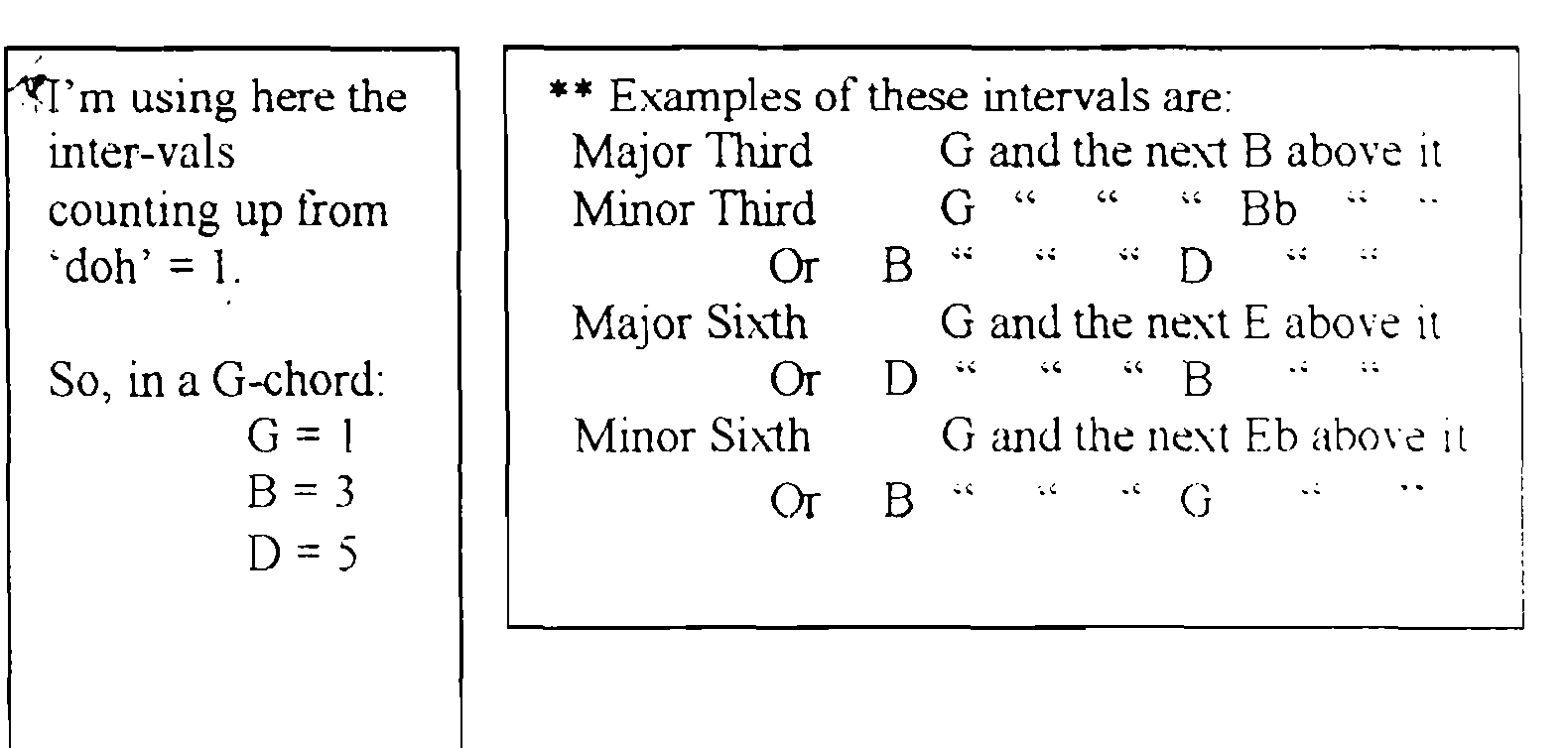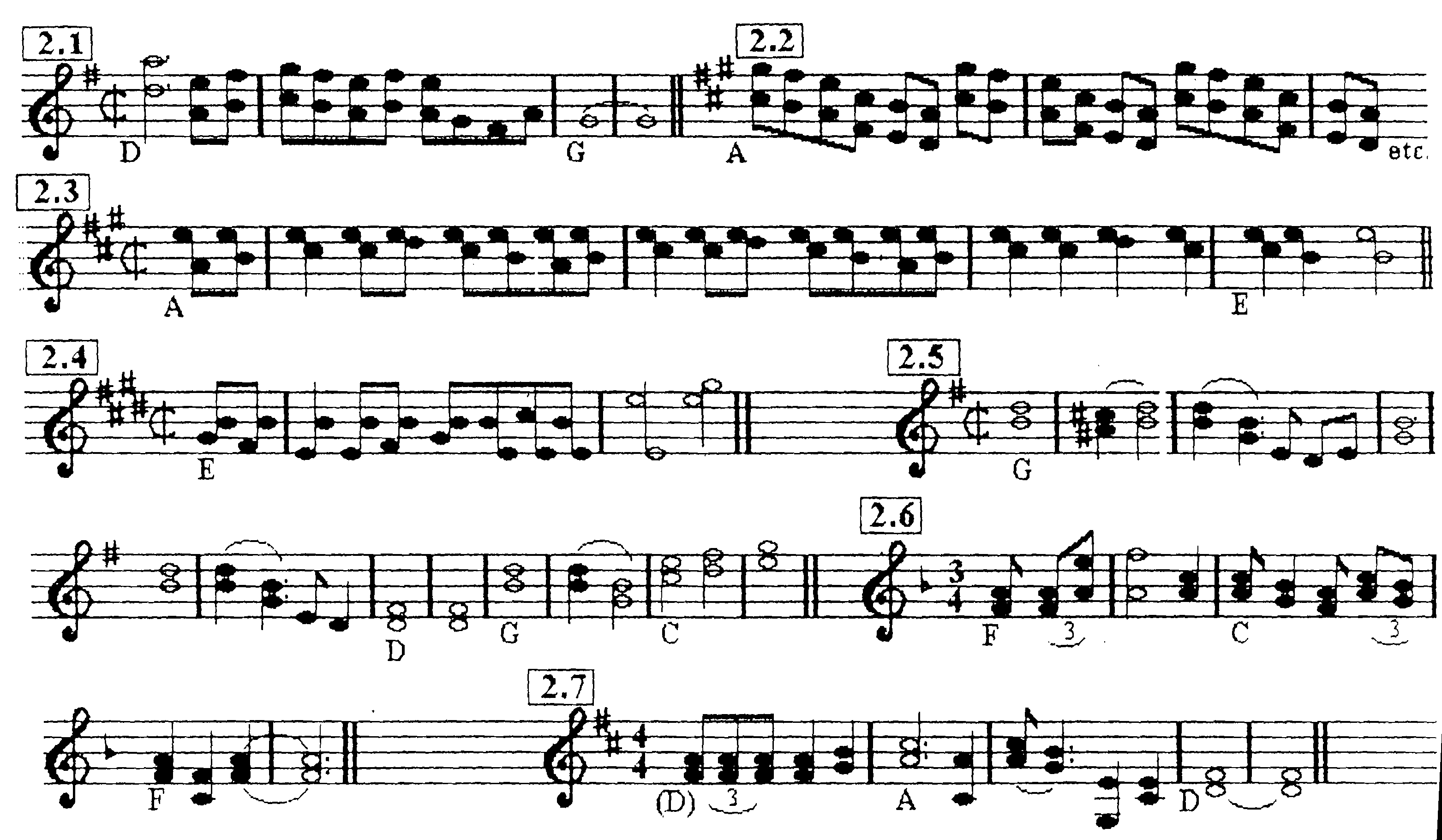Bluegrass Your Fiddle Part 2
Bluegrass Fiddle Tuition by Rick Townend
| Share page | Visit Us On FB |
Bluegrass your Fiddle Part 2
Two strings
Last time I set out some typical bluegrass fiddle licks in G. This issue I'll try to cover some of the exciting bluegrass sounds that are not specific to any one key.
Much of what makes bluegrass fiddle so different is the playing of two strings at once - and this is often what intrigues jazz or classical players or people following other traditional styles. One common device is to play the same note on two strings: one open and the other at what (as a person who plays mandolin as well as fiddle) I think of as the 7th fret. As a fiddler you'd probably play this stopped note mainly with your little finger. Obviously you can only do this for the notes D, A, and E, but these are common enough in the standard bluegrass keys: for example in D, you could use D (open D-string plus D on G-string) and A (open A-string plus A on D-string), as these are the first and fifth notes* in the scale, and are the primary notes in a D chord. With a little ingenuity, you can use E (open E-string plus E on A) in a C chord (as the 'third' note), and D (as above) to give flavour in an E chord as an extra-powerful seventh note, perhaps in a bluesy number. Generally speaking, you can use this double-string idea anywhere you choose in a break or tune; it just adds a bit of flavour and emphasis.
You can give the sound an extra buzz by starting a tone or semitone below the 'target' note (on the string that's stopped) and sliding up till you 'hit' the same note as the open string. You can get a similar effect to the 'double note' by pairing an open string with a stopped note an octave higher - e.g. open D on the D-string plus D (an octave higher) on the A-string. Again, it can be nice to slide up into the stopped note. Of course many jazz fiddlers play double-notes and octaves anywhere on the fiddle by stopping both strings: this hasn't caught on much among bluegrass players, but I'm not saying don't do it -you might be the person to make it work!
Another straight-forward way of using double stops to great effect is to add a note a fifth higher to a tune note, using one finger to stop both strings. This sounds particularly good when the tune is on the 5th or 3rd notes* of the chord - see [2.1] which is a last line for e.g. 'Roll in my sweet baby's arms', and [2.2] which is a flourish to finish off a fast solo in the key of A.
It's traditional in dance tunes in A and D to play any other open string that sounds OK as a 'drone', along with the tune notes: see [2.3] - the first line of Golden Slippers'. Bluegrass fiddlers will build on this idea by using the index finger to 'barre' two strings and then play as if this was the nut of the fiddle, still playing both strings - one as a tune, and the other as a drone. For instance, on the top two strings this gives the ability to play in Bb, B and C, and on the middle two in Eb, E and F: [2.4] is the first line of 'Footprints in the snow', in the key of E.
The use of double-stopped notes a major or minor third apart**, or a major or minor sixth apart is characteristic of slow tunes or waltzes, or sections of fast tunes where you want to play long notes - perhaps before you tip over into an amazing helter-skelter of fast notes in the last line. See [2.5] to [2.7] for examples: [2.5] is a possible first three lines of a break for 'Roll in my sweet baby's arms' in G (see [2.1] above for the last line); [2.6] is a 'turn-around 1 intro in F, based on Joe Meadows' playing on the Stanleys' 'That happy night'; [2.7] is an intro in D used by Roy Russell, who played with Jim Eanes, showing an imaginative use of the open G string - I'm grateful to Bob Winquist for showing me this one.
I'm often asked about left hand fingering of these double-stops: there isn't really a rule, but as a guide-line you need to be prepared to move your left hand up the neck, using for 'thirds' mainly index and ring fingers and for 'sixths' mainly middle and ring-fingers, although in some cases you may prefer to change; try this (in C): using the top two strings, play the

sequence C&E (middle + open string) -D&F (ring + index-fingers) - E&G (little + middle-fingers). 'Stretched' fingering may be useful at times: (on the A & E strings again) D&G (middle & index-fingers to D&F# (again middle & index-fingers). A usage which I feel is likely to be mainly bluegrass in character is the use of the left thumb to play, for example, G# on the G-stnng with E-on-the-D-string: it's a lazy habit, probably introduced by some guitarist!
These 'third' and 'sixth' intervals are the nuts-and-bolts of playing twin-fiddles in triad style, where usually one fiddle plays the tune, and the other fiddle the two harmony parts I'll be covering twin-fiddles in a future issue. I'll also cover double-stops such as the 'Orange-Blossom Special' lick in a section all about bluegrass styles of bowing.

To buy books Bluegrass Fiddle check the Bluegrass Fiddle Collection at Sheet Music Plus.
You may also be interested in other Bluegrass Related Items on this site:
Playing Bluegrass
Bluegrass Harmony Singing - Tutorial Learning Bluegrass Jamming -Tutorial Learning to play the bluegrass instruments by Rick Townend Bluegrass Your Fiddle, Insiders guide and tutorial on Bluegrass Fiddling by Rick Townend A more complete definition of bluegrass and its background